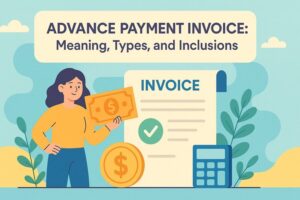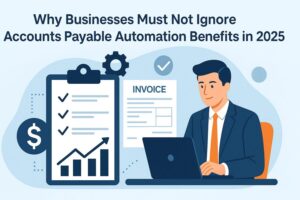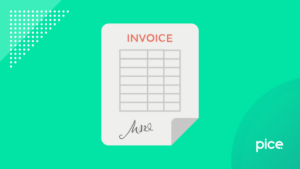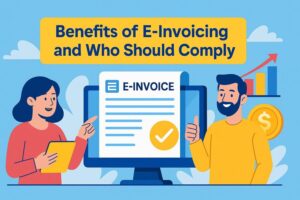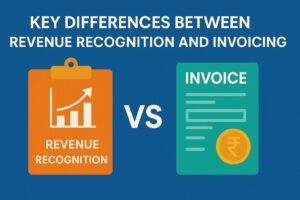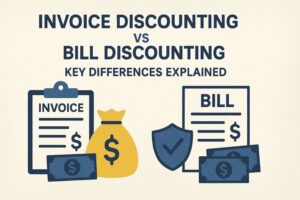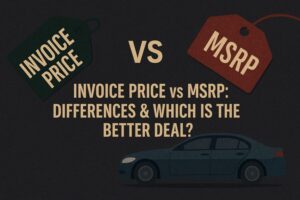What is The Difference Between Proforma Invoice and Tax Invoice
- 24 Nov 25
- 9 mins

What is The Difference Between Proforma Invoice and Tax Invoice
- Differences Between Proforma Invoice and Tax Invoice
- Proforma Invoice: What It Means
- How Does a Proforma Invoice Work?
- Tax Invoice: What It Means
- How Does a Tax Invoice Work?
- Important Details in a Tax Invoice and a Proforma Invoice
- Proforma Invoice vs Tax Invoice: Use
- 4 Benefits of a Proforma Invoice
- 4 Limitations of a Proforma Invoice
- 4 Benefits of a Tax Invoice
- 4 Limitations of Tax Invoice
- Conclusion
Key Takeaways
- The key difference between proforma invoice and tax invoice is that a proforma provides an estimate, while a tax invoice is a final, legally binding payment document.
- A proforma invoice is issued before delivery, whereas a tax invoice is issued after goods or services are supplied.
- Proforma invoices contain estimated values, while tax invoices include GST breakdowns, final amounts, and payment terms.
- A proforma invoice has no legal or tax validity, but a tax invoice is mandatory for GST filing and claiming ITC.
- Only tax invoices must be reported on the IRP portal within 30 days, while proforma invoices do not require reporting.
Did you know that the deadline to report tax invoices on the IRP portal is 30 days from the date of issuance?
However, before you generate and report your tax invoices, you need to prepare pro forma invoices for the same transactions. So keep reading to learn the difference between proforma invoice and tax invoice to comply with Indian GST (Goods and Services Tax) laws.
Differences Between Proforma Invoice and Tax Invoice
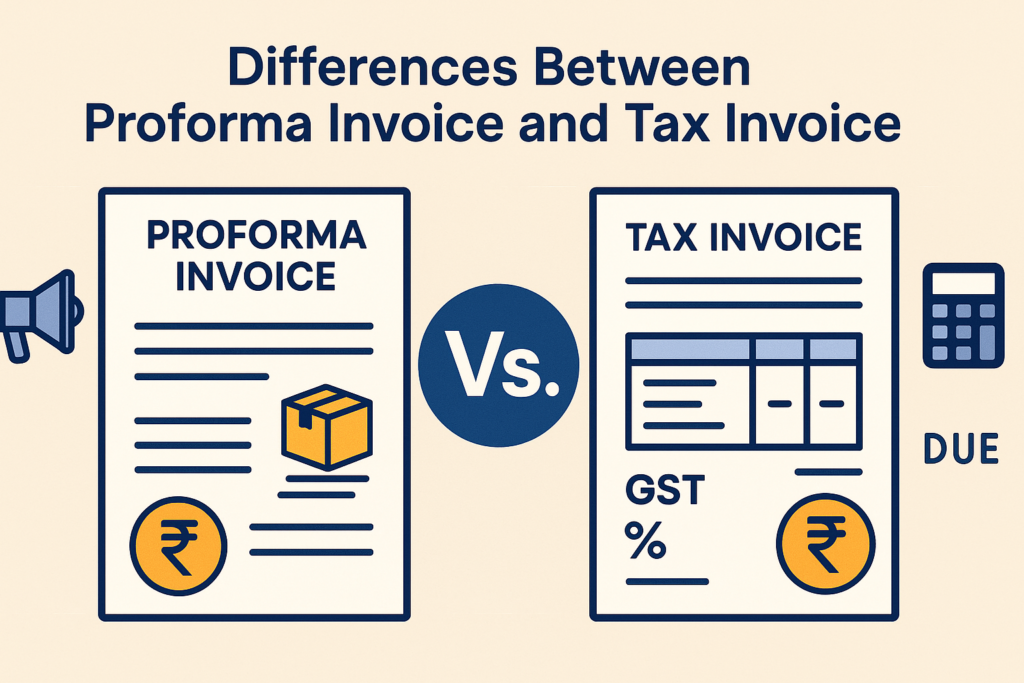
Here are six key differences between a pro forma invoice and a tax invoice:
| Parameters | Proforma Invoice | Tax Invoice |
| What It Is | An initial invoice sent to buyers before the delivery of goods and services | A billing document sent to buyers including details of transactions |
| Purpose | Provides estimates of fees, costs and delivery date | Used to request payment for supplied goods and services |
| Time of Issue | Generated before sales and delivery | Generated after the delivery of goods and services |
| Content | Includes details of shipping, goods/services, pricing and projected delivery date | Includes payment details, tax breakdowns, item list, and due date |
| Legality | Does not have legal importance | If it is signed by the buyer, it acts as a legal document |
| Use | To provide estimates, settlement terms and conditions, and assistance in customs for international transactions | To record sales transactions, maintain accounting records and request payment |
| Payment Terms | Includes negotiable terms and conditions without payment terms | Includes payment terms such as due date and payment mode |
💡For invoice generation, use the PICE App.
Proforma Invoice: What It Means
A proforma invoice is a preliminary or advanced document that includes estimated costs, fees, descriptions of goods/services, prices, quantities, and conditions of a sale. It is sent to prospective buyers before the sale is confirmed, enabling negotiation.
However, it does not include applicable taxes or serve as a payment request.
For example -
If you are issuing a proforma for estimation for a sale worth ₹1,000, you would mention this amount, add other costs (e.g., ₹50 shipping), and include terms and conditions, but no taxes or final payment details.
How Does a Proforma Invoice Work?
Here are the 4 steps in which a proforma invoice works:
Step 1: A seller generates a basic proforma invoice format with details of goods and services, followed by cost estimates.
Step 2: The seller sends it to the concerned buyer.
Step 3: The buyer checks the initial invoice to confirm or negotiate the details.
Step 4: If the buyer agrees, the seller sends the agreed-upon goods or services and generates a commercial invoice post transaction.
Tax Invoice: What It Means
A tax invoice is a legally binding document that sellers send to buyers after the delivery of goods or services to request payment. This invoice is used for accounting purposes by businesses to highlight business transactions.
It includes details of goods and services, final price, and the tax details such as the applicable tax breakdowns and the tax rate. This invoice additionally includes the delivery address, shipping address, a list of prices, and other essential parameters.
Suppose a seller, Mr B, supplies goods worth ₹10,000 to a buyer. The applicable GST rate is 18%. Then, Mr B will have to mention 18% GST (₹1,800) and the total amount of ₹11,800.
Thus, it is a record of transactions between buyers and sellers in compliance with tax regulations. You can use it to claim input tax credit (ITC) on purchases.
How Does a Tax Invoice Work?

Here are the 3 simple steps in which a tax invoice works:
Step 1: A seller issues a tax invoice after the delivery of services or goods.
Step 2: It entails the payable amount, including the tax breakdowns.
Step 3: The buyer checks the details such as buyer and seller information, goods or services details like quantities, price, description, GST rates and the total payable amount before they pay.
Important Details in a Tax Invoice and a Proforma Invoice
The following essential details need to be included in a tax invoice:
- "Tax Invoice" at the top
- Invoice number
- Name, address and contact of the seller
- Date of issue
- Name and address of the buyer
- Quantity of goods/services
- GST number
- Unit price (exclusive of tax)
- Tax per unit
- Subtotal and tax breakdowns
- Total amount (inclusive of tax)
- Payment terms
The below-mentioned details need to be included in a proforma invoice:
- "Proforma Invoice" at the top
- Seller’s name and contact details
- Date of issue
- Invoice number
- Buyer’s details
- Description of goods/services
- Estimated prices (as a list with prices)
- Shipping costs (if applicable)
- Total estimated amount
- Expected delivery date
- Terms and conditions
Proforma Invoice vs Tax Invoice: Use
You need to use a pro forma invoice before a transaction to send estimates of goods and services. On the flip side, you need to issue a tax invoice after the transaction to request payment, with details of the transaction highlighted.
Here are 2 examples to help you understand the use of the above-mentioned invoices:
Example 1: Quotation for Custom-Made Furniture
A customer, Mr X, requests a furniture manufacturer to manufacture a custom-made dining table. Consider the instances below to identify when the furniture manufacturer will generate a proforma invoice and when he/ she will generate a tax invoice:
Example of Proforma Invoice: The furniture manufacturer will prepare a proforma invoice or a quote initially, stating the estimated cost of ₹10,000, the expected delivery date, suppose 2nd of August 2025, and the materials to be used. He will then send it to Mr X for confirmation before actual delivery.
Example of Tax Invoice: Once Mr X agrees to the terms and conditions, the furniture manufacturer will manufacture and send the custom-made dining table to the customer. After the transaction on the 2nd August 2025, the furniture manufacturer will prepare and send the tax invoice stating the amount, the applicable GST and the total cost.
If it is a metal dining table, the applicable GST rate will be 18%.
The amounts that need to be mentioned on the tax invoice are ₹10,000, 18% of ₹10,000 = ₹1,800 and the total amount is ₹10,000 + ₹1,800 = ₹11,800.
Example 2: Importing Electronics
Suppose an electronic retailer, Mr P, plans to import 10 smartphones from a supplier, Mr R. Consider the instances below to know the cases of proforma invoice issuance and tax invoice issuance:
Example of Proforma Invoice: Mr P will demand a proforma invoice from the supplier, Mr R, with estimated cost, shipping cost, taxes, the estimated delivery date and terms and conditions.
Example of Tax Invoice: Once Mr P receives the order, he will demand a tax invoice as a legal document from the supplier, Mr R. The tax invoice will include the actual cost, taxes, tax rate and the total amount payable by Mr P. Based on the payment request (tax invoice) by Mr R, Mr P will pay the total amount due for the transaction.
4 Benefits of a Proforma Invoice

- Flexibility: A proforma invoice allows suppliers and purchasers to negotiate on terms and conditions prior to finalising a deal.
- Facilitates Advance Payments: It allows buyers to estimate the costs and arrange advance payments, especially in the case of international transactions.
- Preliminary Document: A proforma invoice acts as an initial document highlighting the details of goods/ services, prices and terms, helping buyers make informed decisions.
- Import Documentation: A proforma invoice enables customs to clarify details such as value and origin pertaining to goods, ensuring hassle-free clearance within the stipulated time.
4 Limitations of a Proforma Invoice
- Lack of Legal Validity: As a proforma invoice is a document of estimates, it is not a legally valid document.
- Time-consuming: It is a time-consuming process to prepare and generate a proforma invoice, especially for businesses dealing with large volumes of transactions.
- Not Used for Tax Purpose: A supplier cannot use a proforma invoice for tax purposes or claim ITC.
- Subject to Change: A proforma invoice is not the final invoice; rather, it is a draft and entails negotiable terms and conditions. As a result, unexpected costs and delays are not mentioned in such an invoice.
4 Benefits of a Tax Invoice
- Clear Breakdown: A tax invoice provides the breakdown of different parameters such as per unit cost, taxes, tax rate, sub-total and total amount.
- Legal Validity: A tax invoice is a legally valid document used for tax compliance. This ensures that transactions are recorded accurately and documents are maintained.
- Enhanced Professionalism: Issuance of tax invoices by suppliers indicates best practices of professionalism with compliance with the Indian tax laws.
- Input Tax Credit (ITC): Businesses can claim ITC using a tax invoice to offset their outward tax liability.
4 Limitations of Tax Invoice
- Cost of Compliance: The cost of generating a tax invoice often includes hiring employees, purchasing software and administrative expenses. This makes the cost of compliance high.
- Higher Regulatory Requirements: Often, adhering to the regulatory requirements and tax regulations is complex in the case of issuing tax invoices.
- Cash Flow Issues: Businesses might face challenges with cash flow due to tax payment time, creating financial instability.
- Risk of Disputes: If there is a deviation from the appropriate format of preparing a tax invoice, there can be disputes between the buyer and the seller. This might further result in miscommunication and delayed payments.
Conclusion
Now that you understand the difference between a pro forma invoice and a tax invoice, always ensure your tax invoices are error-free, as they are crucial for invoicing compliance, GST reporting, and ITC claims.
While a proforma invoice allows flexibility and revisions, mistakes in a tax invoice can lead to non-compliance or even legal issues. Always include all mandatory elements to avoid disputes and streamline business transactions.
 By
By 





